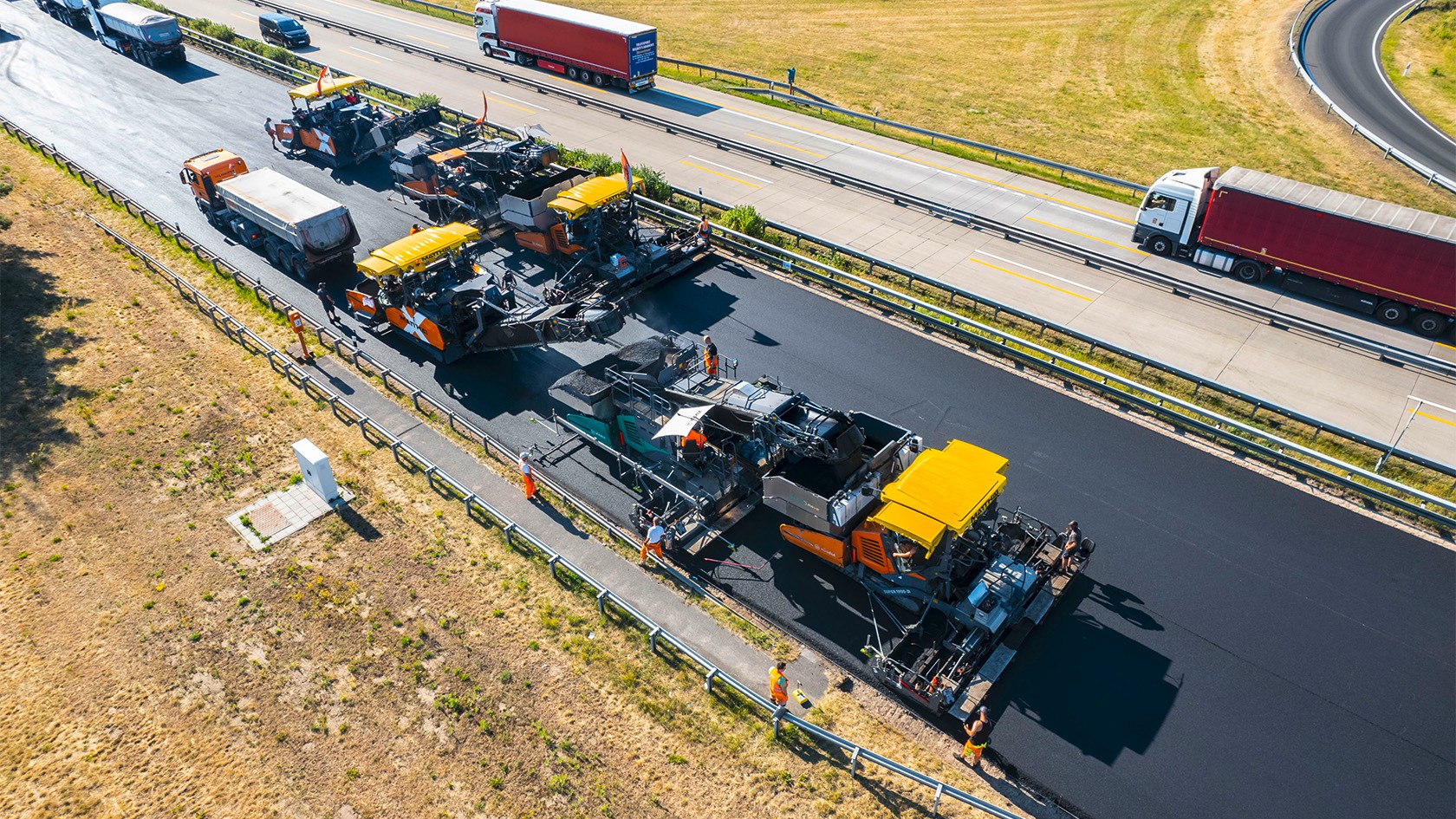Two layers in one pass
The contractor, a syndicate formed of Matthäi Michendorf and Matthäi Stendal, consequently decided to pave “hot on hot” using two InLine Pave trains from Vögele. This method requires the material feeder, the paver for the binder course and the paver for the surface course to work “in line” (consecutively) to pave the surface and binder courses in one pass. This delivers a number of benefits at once. “Hot on hot” paving of the binder and surface courses guarantees optimum bonding between the two, improving the quality and service life of the surface course. The proportion of surface course can also be reduced in favour of the binder course. On the one hand, this improves the stability of the road surface, because of the higher proportion of binder course (which resists deformation); this prevents deformation of the road. On the other hand, the approach saves money, because less binder-rich surface course material - much more expensive than binder course material - is required. Unlike in the conventional paving method, there is also no need to spray on bitumen emulsion, which saves material, CO₂ emissions and working time. “The InLine-Pave method is ideal for motorway projects in particular, and generally for those projects requiring an especially resilient surface to be paved under significant time and cost pressure, whilst taking account of sustainability issues,” says Frank Jilge, paving supervisor at Matthäi.









